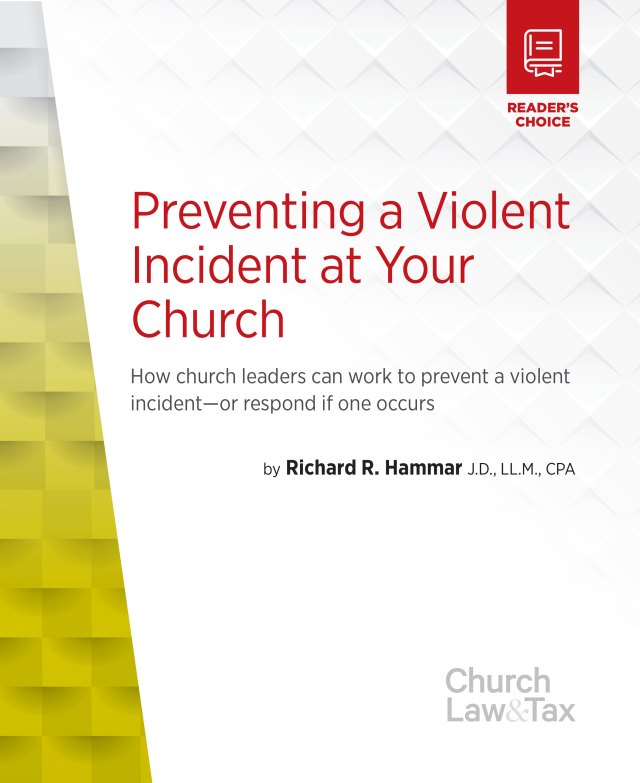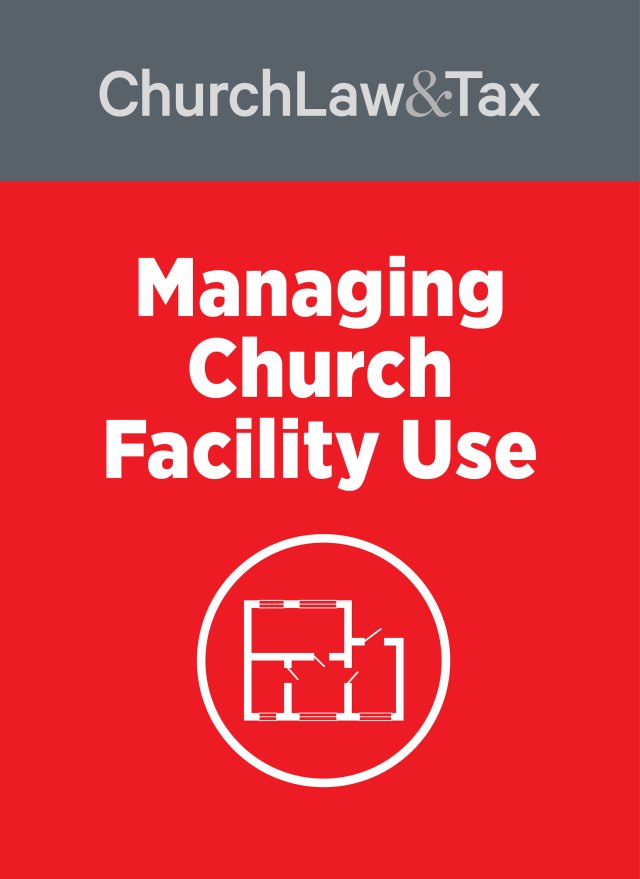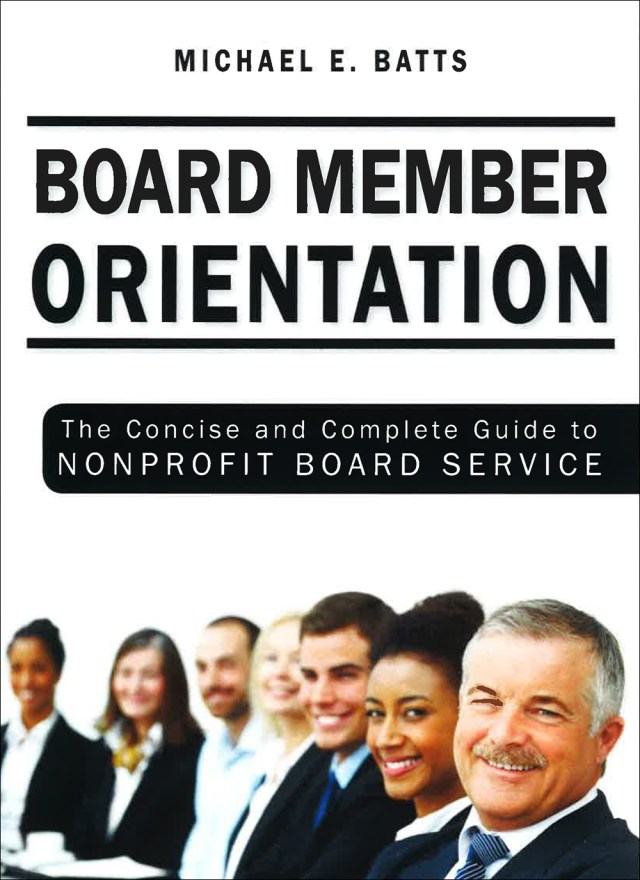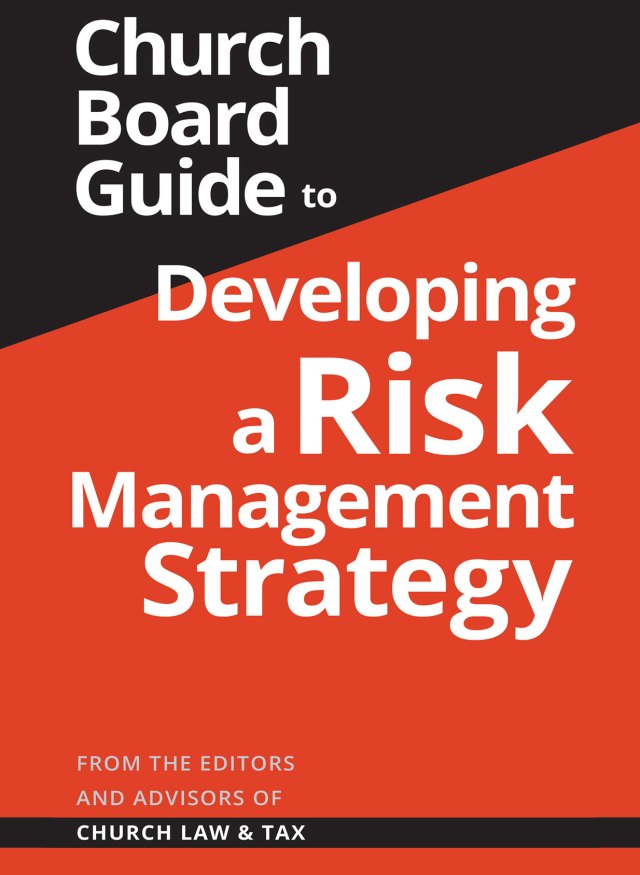A Kansas court ruled that a church was not liable for the use of reasonable physical force by an usher in restraining a woman during a church service who was making threats against the pastor.
It's critical for church leaders to note this ruling because it shows the level of control they can have regarding a disruptive person. Churches do not have to tolerate persons who disrupt religious services. Church leaders can ask a court to issue an order barring the disruptive person from the church's premises. If the person violates the order, he or she may be removed from church premises by the police, and may be found to be in contempt of court.
In Kansas, a church member ("Esther") had a dispute with her church regarding a stained glass window committee of which she was a member. After the church removed her from the committee she resigned her membership in the church. Esther continued to make numerous contacts by phone and letter with the leadership and members of the church. The tone of the messages varied from apologetic to abusive. Most of the messages concerned Esther's belief that church leaders, especially the pastor, had lied about her.
Many of the letters appear to have been sent to the entire congregation. Some of the contacts could be taken as threatening or, at least, disturbing. For example, on one occasion Esther went to the church to confront the pastor. They had a brief conversation and then the pastor asked her to leave. Esther got upset and yelled at the pastor that she hated him and hoped he would go to hell, and she hit him three times on the arm. She then left.
A few months later she showed up at church on a Sunday morning just as a worship service was concluding. Four deacons and ushers formed a barricade to prevent her from following them into the sanctuary. She apparently tried, unsuccessfully, to push past them. She then yelled at the pastor through the sanctuary doors that he had lied about her. When the pastor did not respond, Esther turned and began yelling to church members who were still standing in the lobby in order to rebuke them for not following scripture and for not helping her. An usher ("Tim"), who had some military experience, was concerned by Esther's anger and was not sure what she might attempt to do. He used his military experience to grab her in a way that would cause brief pain but would not cause any permanent injury. As soon as she agreed to leave, Tim let go of her. He held her arms for about 15 to 20 seconds. Esther did not have any bruises and needed no medical care as a result of the incident.
Following this incident the church sought a restraining order prohibiting Esther from entering church property or contacting staff or members of the church. Esther counterclaimed by asserting that Tim, the usher, had committed battery against her while attempting to restrain her and remove her from the church. The trial court dismissed the battery claim, and Esther appealed.
A state appeals court began its opinion by defining battery as "the unprivileged touching or striking of another with the intent that the contact be harmful or offensive." The court rejected Esther's contention that Tim should have known that touching her as he did was an offensive act:
This mischaracterizes his testimony. He did agree that he does not "ordinarily grab women because that would be offensive." But the situation here was hardly a "normal" or "ordinary" situation. At the time of the alleged battery, Esther was not a member of the church. It appeared to Tim that others were in danger. He "didn't know what she was capable of, she was out of control. She kept screaming and kept trying to get to the pastor. She kept forcing herself up to people to get to him."
Esther did not verbally threaten anyone, but Tim thought "her actions showed otherwise." Importantly, at that time, he knew she had hit the pastor during an earlier encounter and was generally aware of the nature and existence of the dispute between her and the pastor. He thought some force was necessary because she "was screaming so loudly, and I did ask her, but just asking her was not going to get her out of here."
The court noted that the church's bylaws specified that ushers were to assist in maintaining "a worshipful atmosphere in the church," and, among other duties, were to "take care of any disruption or emergency situation during services" and restore "the sanctuary to physical orderliness following each service."
Against the background of the peculiar facts here presented, it was not error for the trial court to conclude that Tim's belief that his job was to "help keep the peace in the church" and to "step up to calm the situation down, and diffuse the situation" if someone became disorderly. In short, his belief that some force was necessary to terminate Esther's intrusion was reasonable, as was his belief that a further request would be useless. She admitted that she was angry and shouting. And the amount of force used was reasonable—a brief 15- to 20-second restraint causing no injury.
What this means for churches
Many churches have encountered disruptive individuals. In many cases, church ushers are the first responders, but they often are unsure what actions are appropriate and may be fearful of legal reprisals if physical force is exerted. This case illustrates that physical force may be legally justified in such cases, if reasonable in light of all the circumstances. Obviously, no two cases will be identical, and there may be legitimate debate over what is "reasonable" in a particular case. Unfortunately, these decisions are not made following an extended time of contemplation, but rather spontaneously in the midst of a crisis. Here are some options for church leaders to consider:
(1) Call the police. This often is the best option.
(2) Some churches use a police officer as a security guard during worship services. The officer will be able to confront a disruptive person with minimal to no liability for the church.
(3) If someone is threatening to inflict physical harm or to disrupt a worship service, and the church does not have a security guard, then immediate intervention by church staff may be necessary. Physically restraining such a person should always be viewed as a last resort. More than one person should be involved in the restraint so that unfounded allegations of brutality can be rebutted.
(4) In some cases church leaders may be able to avoid such incidents by obtaining a restraining order from a local court.
(5) Ushers should periodically receive training on these issues.
First Church v. Nowak, 209 P.3d 764 (Kan. App. 2009).




